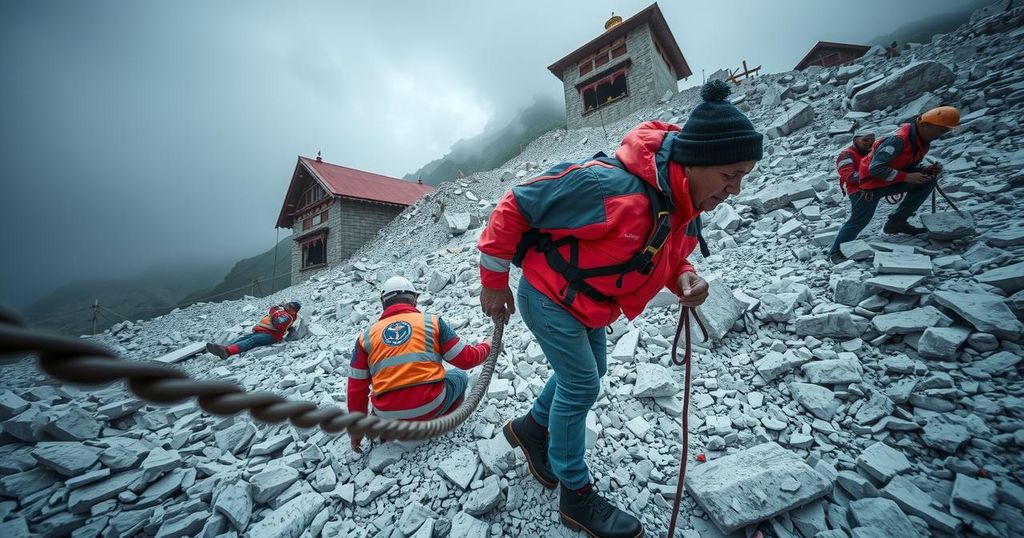Tibet Earthquake: 7.1 Magnitude Quake Claims Lives and Causes Widespread Damage
A 7.1-magnitude earthquake struck Tibet and western China, resulting in 126 deaths and 188 injuries, with over 1,000 homes damaged. Rescue operations are ongoing amidst numerous aftershocks, while the Chinese government mobilizes resources for relief. The earthquake’s epicenter was in seismically active Tingri County, highlighting the region’s vulnerability.
A powerful earthquake, measuring 7.1 on the Richter scale, struck the high-altitude region of Tibet in western China and parts of Nepal, leading to significant destruction and loss of life. The tremor resulted in at least 126 fatalities and injured approximately 188 individuals in Tibet alone, with hundreds of homes damaged. Rescue operations faced challenges due to ongoing aftershocks, with teams working tirelessly to locate those trapped beneath the rubble of collapsed structures.
Footage released by China’s Ministry of Emergency Management depicted rescue workers navigating through debris and carrying injured individuals on stretchers. The earthquake’s epicenter was situated in Tingri County, an area known for seismic activity due to the convergence of the Indian and Eurasian tectonic plates. Despite the proximity of the earthquake felt in eastern Nepal, the National Emergency Operations Center reported no immediate injuries or damage in that region.
After the initial quake, approximately 150 aftershocks occurred, further complicating rescue efforts. The Chinese government has mobilized over 3,000 rescuers and allocated 100 million yuan (approximately $13.6 million) for relief efforts while urging all available resources to assist those affected. The severe tremor, along with the continuing aftershocks, has prompted but also hampered rescue missions, given the remote and harsh conditions of the region.
Official reports indicate that nearly 6,900 residents inhabit three townships and 27 villages within a 20-kilometer radius of the epicenter, which sits at an altitude of roughly 4,200 meters (13,800 feet). The historical vulnerability of this region to earthquakes underscores the importance of preparedness and the need for swift humanitarian response in the wake of such natural disasters.
The recent 7.1-magnitude earthquake in Tibet serves as a stark reminder of the region’s geological instability due to the ongoing tectonic interactions between the Indian and Eurasian plates. This phenomenon underscores the importance of monitoring and disaster readiness in high-risk areas, especially given the sparsely populated yet vulnerable nature of rural Tibet and surrounding regions. Understanding these dynamics is crucial for delivering effective relief and preventing future catastrophes.
In summary, the earthquake that struck Tibet highlights the deadly consequences of natural disasters in high-altitude regions characterized by complex geological conditions. Immediate efforts by rescue teams, backed by government support, are underway to assist those affected. This event shows the critical need for ongoing vigilance and preparedness in seismically active areas to mitigate loss of life and facilitate recovery.
Original Source: www.marca.com




Post Comment